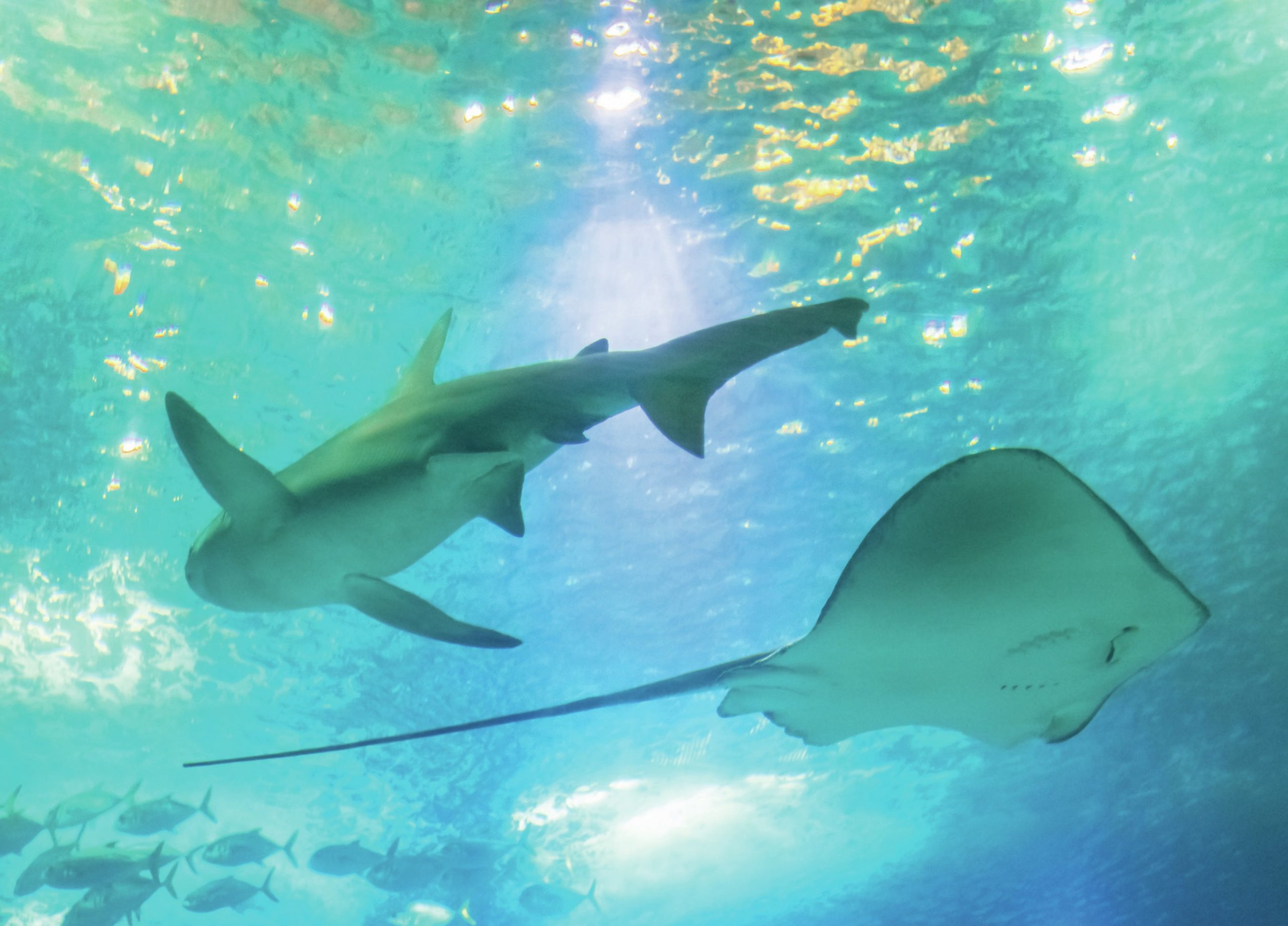
Sharks, rays and skates are members of the Elasmobranchii. They are characterised by their skeletons, which are made from cartilage rather than bone. They have five to seven gills, rows of teeth that are continuously replaced and they lack swim bladders. They have a range of amazing morphologies, including ‘saws’ (sawfish), ‘hammers’ (hammerhead sharks) and ‘stings’ (stingrays). Some even glow in the dark — they are bioluminescent (lantern sharks). The largest individual in the group is the whale shark (Rhincodon typus), reaching more than 12.5 metres in length. The smallest, the dwarf lantern shark (Etmopterus perryi), is no longer than 21 centimetres (see Figure 1).
Some elasmobranchs are apex predators, such as the great white shark, and are key elements within food webs. Their presence is vital for the maintenance of the food chain. They help to maintain species diversity and are often keystone species. Apex predators can alter habitats and the disappearance of sharks has had a severe impact on coral reefs, seagrass beds and fisheries. Their absence causes an increase in abundance of other large predatory fish and the subsequent decline in herbivores leads to the expansion of seaweeds, preventing the development of coral reefs.
Your organisation does not have access to this article.
Sign up today to give your students the edge they need to achieve their best grades with subject expertise
Subscribe




